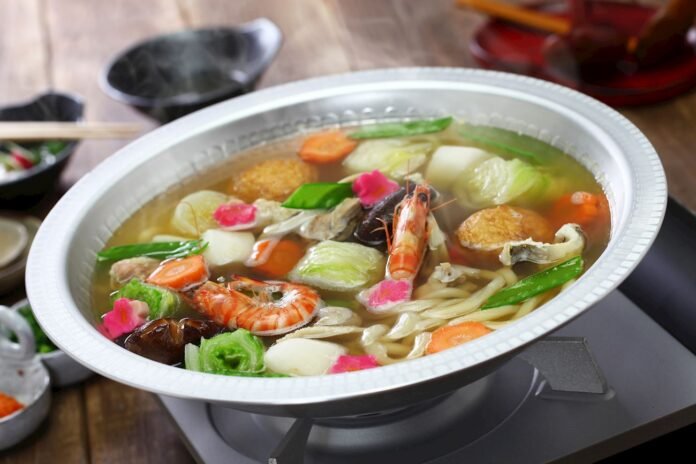
Imagine a cold winter’s day and you’re searching for something to warm your heart. Now imagine a hot pot filled with your favourite vegetables, meats, seafood and some delicious, chewy noodles. This is exactly what Udon Suki is and it is the perfect bowl of food for any winter’s day.
Table of Contents
What is Udon Suki?
Udon Suki is a hot pot dish that usually contains more than 10 different kind of ingredients along with some udon noodles. There is a Japanese dish called Sukiyaki, which a lot of people confuse Udon Suki with, but in fact they are two different dishes! Sukiyaki is also a hot pot style dish but thinly sliced beef, along with a selection of vegetables, is seared and then simmered, in a cast iron pot. The broth is sweet and salty from the soy sauce and is also accompanied with a raw egg as a dip.
Another dish called Nabeyaki udon, is also very similar. It is a traditional hot pot with various meats and vegetables, which is then finished by eating some udon noodles. While the other ingredients are the main star of Nabeyaki udon, the real star of Udon Suki is the udon itself!
Similar to any hot pot, you can put any ingredients that you like. Some popular ingredients are chicken thigh, shrimp, clams, Chinese cabbage, shiitake mushrooms and carrots. These ingredients are place in a saucepan filled with dashi, soy sauce, mirin and sake. As the proteins and vegetables stew in the delicate dashi, their natural flavours enhance the flavour of the broth. Once they are fully cooked, thick udon noodles are added, where you can enjoy the smooth chewy texture as well as the deep broth, all in one bite.
What are Udon noodles?
Udon are wheat flour noodles that are commonly eaten in Japanese cuisine. It is characterised by it’s light yet chewy texture and can be eaten hot or cold. It is said that the true origins came from China during the Nara period (AD 710 to 794). A dumpling made from the same wheat flour and containing red bean paste, called ‘Konton’ was eaten. This was then placed in warm broth and gained the name ‘Onton’. As this dish spread to Japan, it developed into udon we know now.
Within Japan, Udon originated in the Sanuki region in Kagawa Prefecture. A buddhist monk called Kukai travelled to China and ate the Onton dish. He fell in love with it so much, that he brought the knowledge and technology of how to make it back to Sanuki. From there, it grew in popularity. During the Muromachi period (1336 to 1573), it took on the shape of the long noodles we now call udon. This dish became the staple for many people during this period. Furthermore, in the late 17th century, soy sauce began to appear nationwide. People started to combine this with dashi and udon noodles. Various topping were then added and now, we have a variety of udon dishes to choose from.
You can enjoy so many varieties from kake udon to zaru udon. Different regions throughout Japan have their own speciality udon dishes and Osaka has their own, Kitsune Udon, Kasu Udon and Udon Suki.
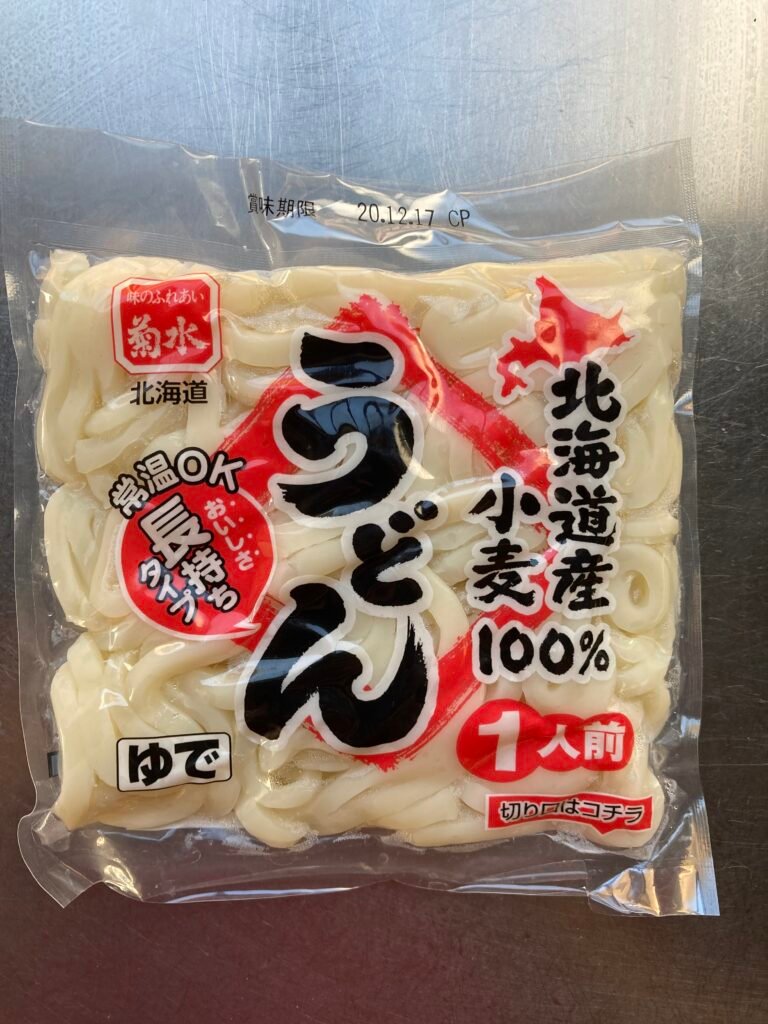
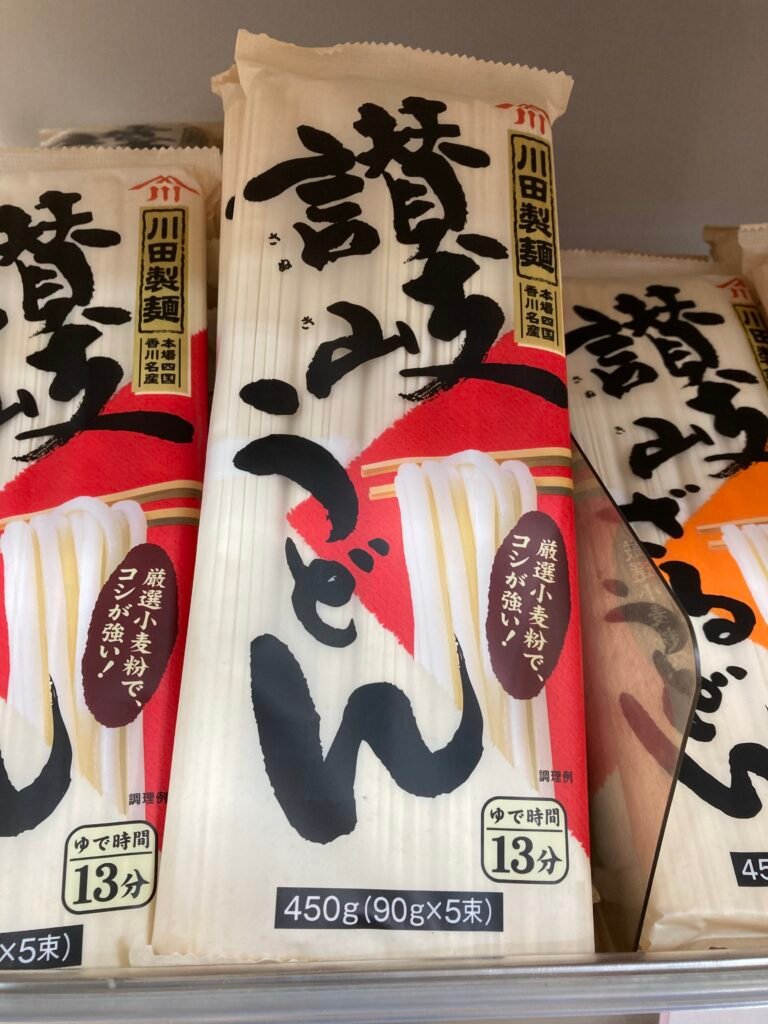
History of Udon Suki
Over 250 years ago, a restaurant called ‘Mimi U’ began as a Ryotei, which is a Traditional Japanese style restaurant. A couple of generations back, the then owner Heitaro decieded to rename the restaurant to ‘Mimiu’ and started to specialise in various Japanese noodle dishes. It is then that Udon suki became famous.
The real star of ‘Mimi U’ is the dashi soup stock they make, which uses fantastic Japanese produce. They use bonito from Kochi, on Shikotsko Island along with kelp from Rishiri Island, all the way in Hokkaido. Furthermore, bonito flakes are also imported from Makurazaki in Kyushu. The result is a deep and delicate broth, packed with umami and is the perfect combination with all the proteins associated with udon suki. They take extreme pride in their dashi, preparing it fresh every day for two hours.
How to make Udon Suki
Ingredients (4-5 people)
- 1000ml dashi
- Sake 80ml
- Soy Sauce 40ml
- Mirin 30ml
- Boneless chicken thigh 2 pieces
- Chinese Cabbage 1/4 head
- Carrot 1
- Shimeji mushrooms 1 pack
- Enoki Mushrooms 1 pack
- Kamaboko (pink fish cake) 1 pack
- Udon 4 packs
*Feel free to put whatever you want into your udon suki. The beauty of it is that you can put all your favourite ingredients and enjoy it how you like!
Method
STEP 1
Start by making your dashi. You can follow my recipe on how to make dashi here. Alternatively, if you have instant dashi, feel free to use it!
STEP 2
Cut your chicken thigh into small bite size pieces. You can keep the skin on or off, it’s completely up to you!
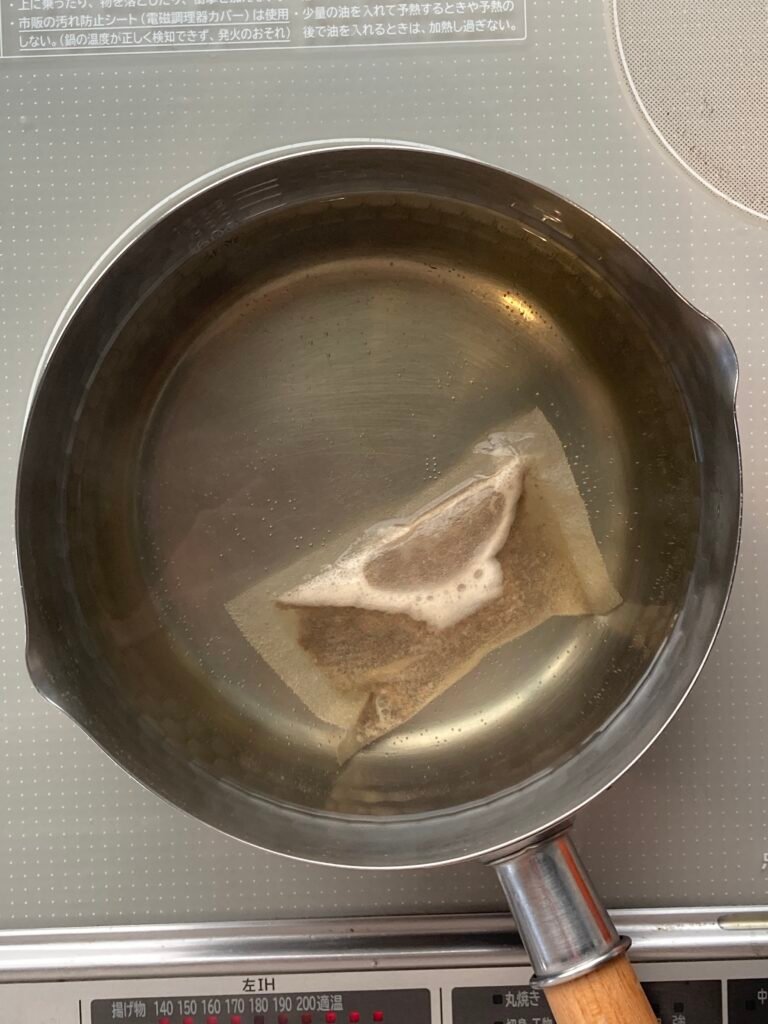
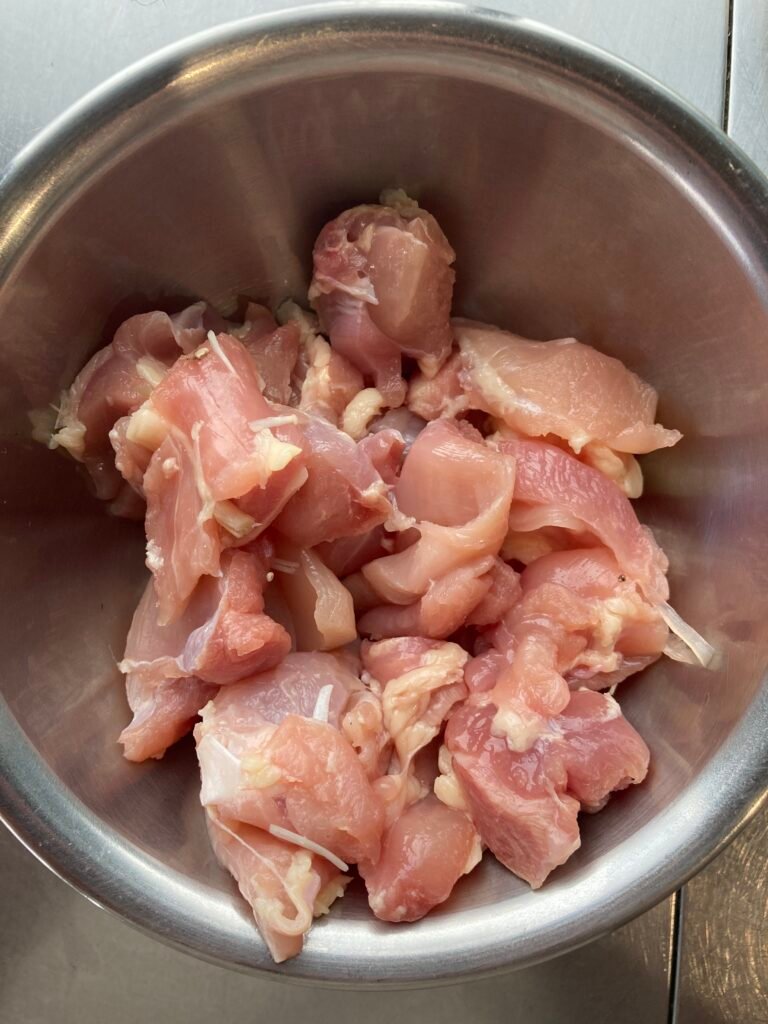
STEP 3
Cut the vegetables into bite size pieces. Peel the carrot and cut in whatever shape you like. For the Chinese cabbage, I cut the top (leafy part) a little large and the bottom stem part a bit smaller. The top takes very little time to cook, whereas the stem is harder and thicker so will require more time. Cutting this way will ensure even cooking. Cut the bottom part of the shimeji and enoki mushrooms so they break apart. Finally, cut the kamaboko into 1/2cm slices.
STEP 4
Heat the dashi, mirin, sake and soy sauce and wait for it to come to a boil. Add the chicken thigh and reduce to medium low heat and let it simmer for 5 minutes.
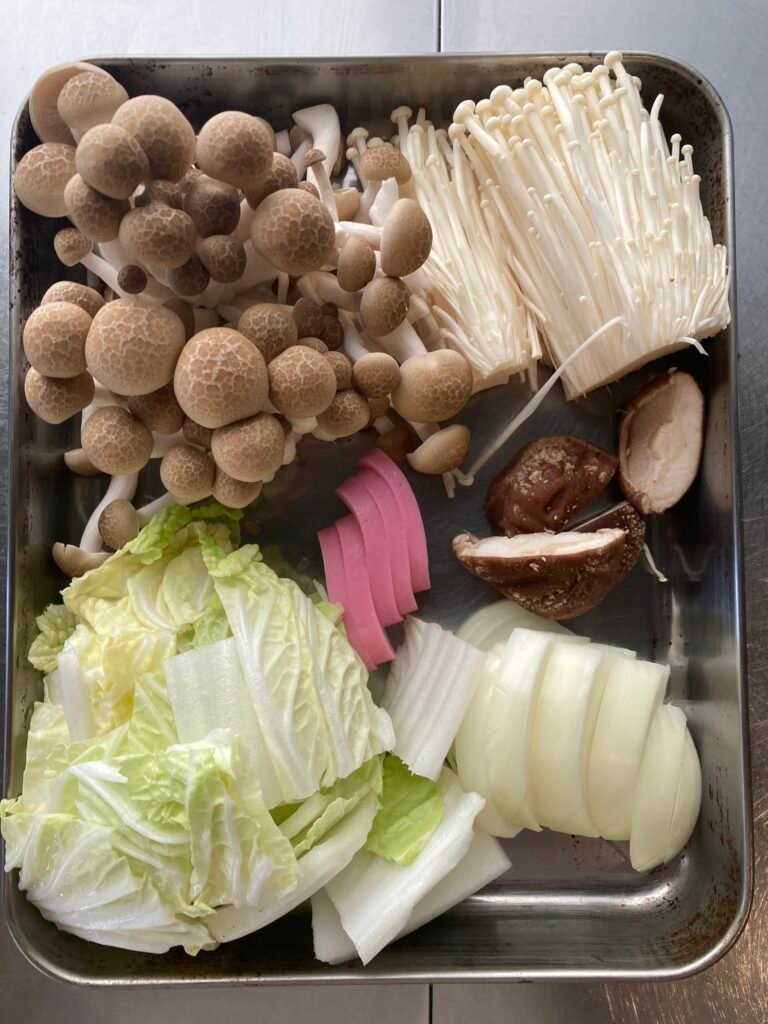
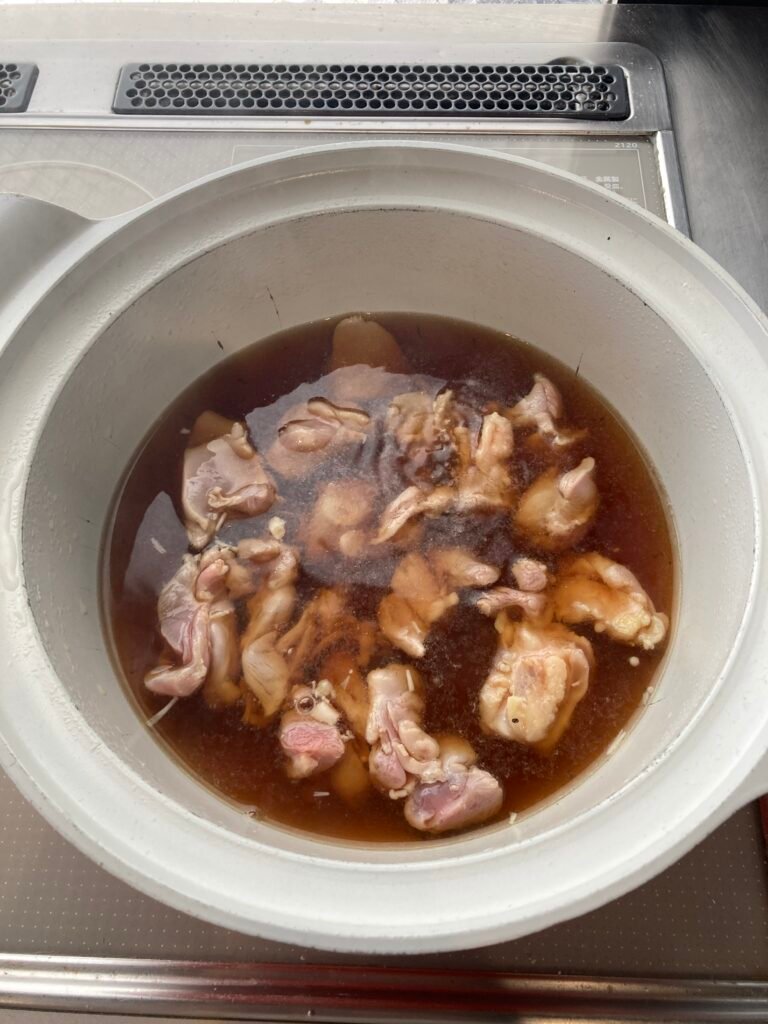
STEP 5
Add the rest of the vegetables.
STEP 6
When they are nearly tender and ready, add the udon noodles and kamaboko.
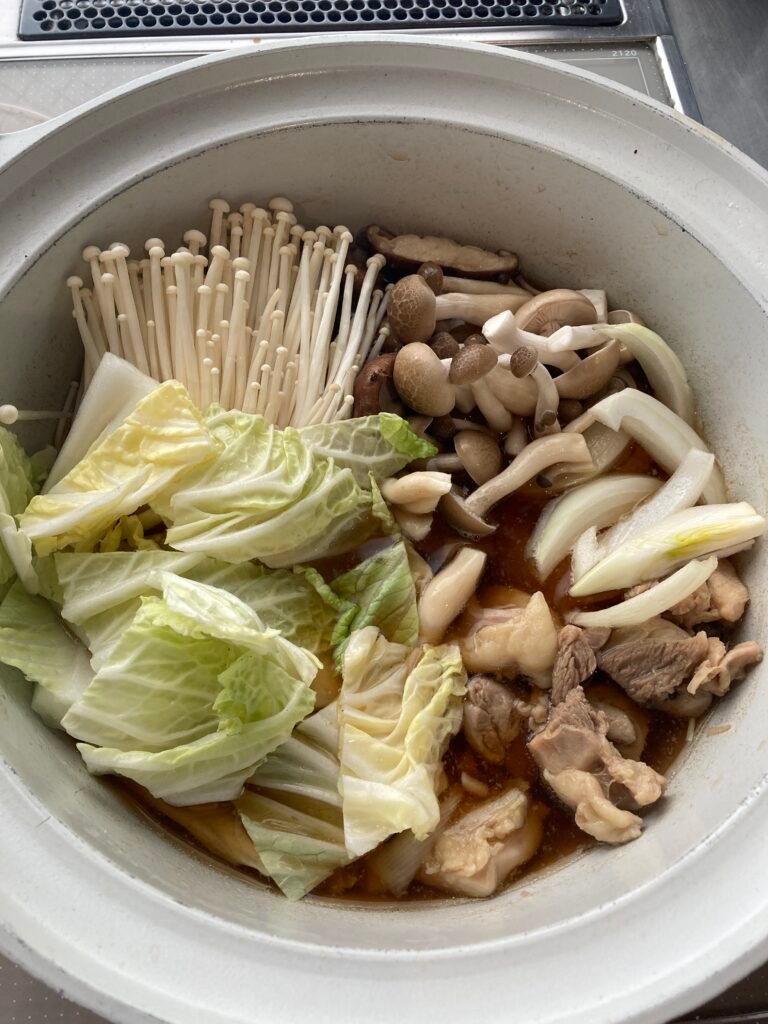
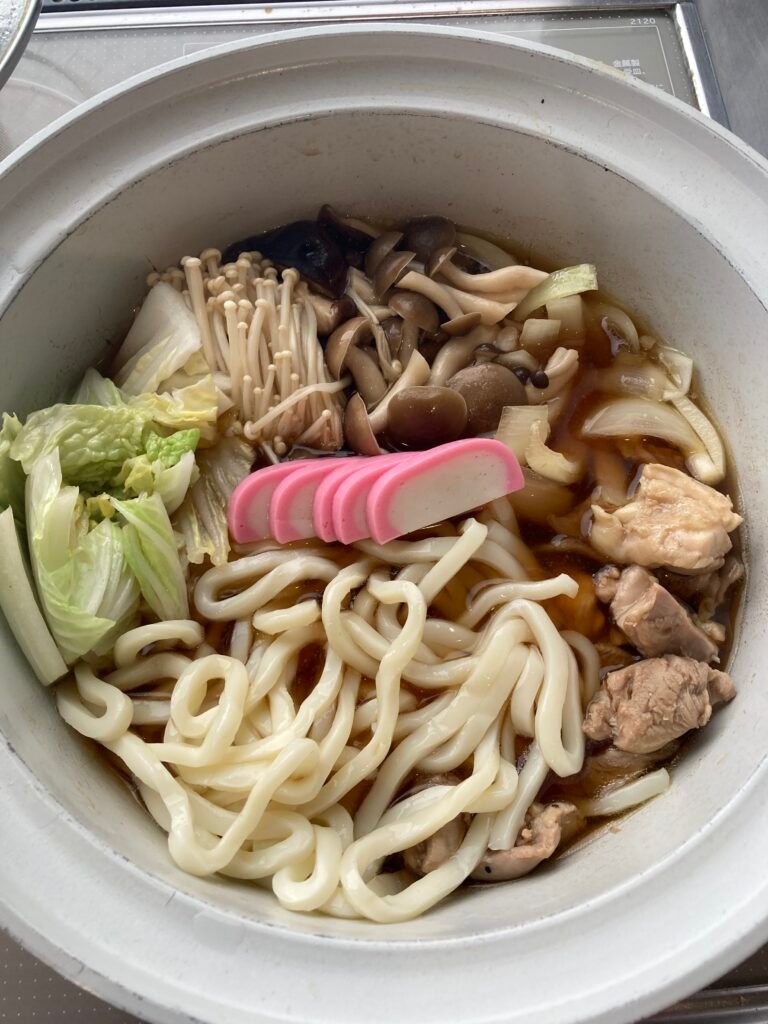
STEP 7
Place a lid on top and cook until the udon is tender.
STEP 8
Add any toppings. I put some Japanese spice on top and enjoy!
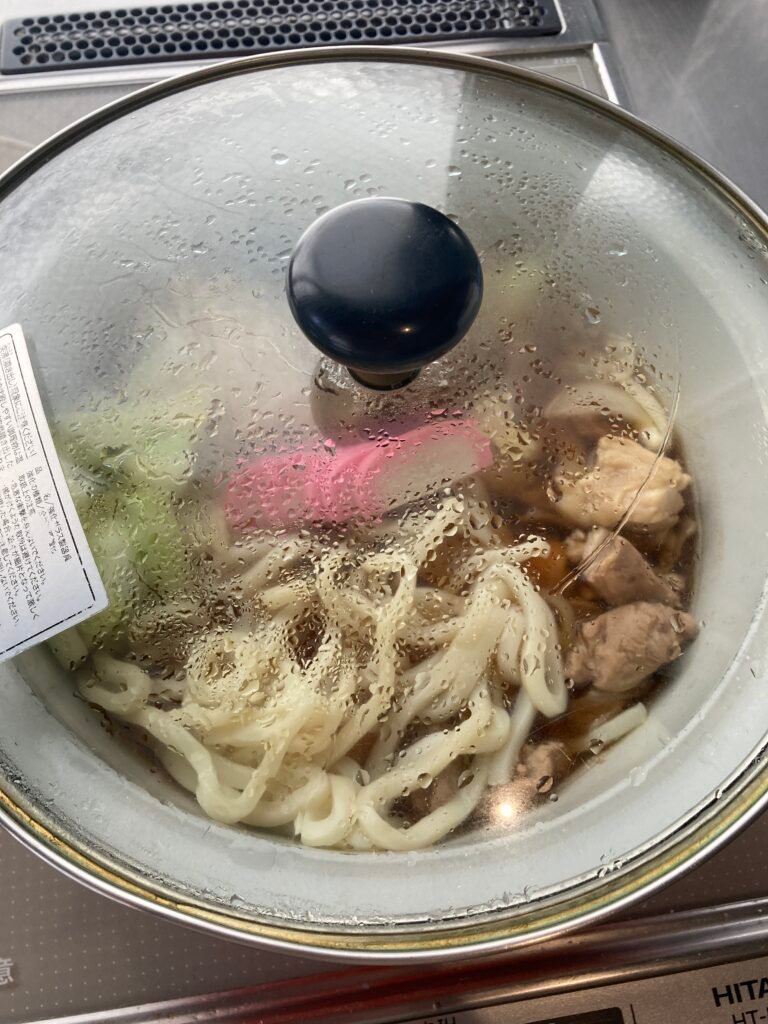
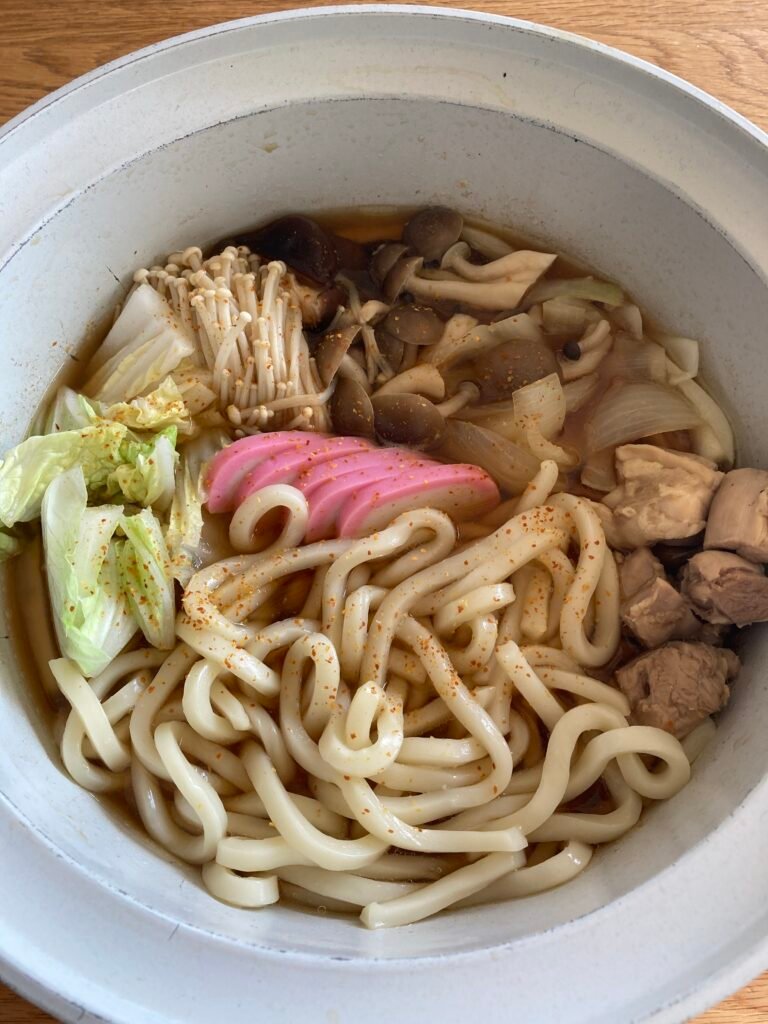
Check out the video below on how to make Udon Suki!
Where to Eat Udon Suki
Mimiu
The birthplace of udon suki is a must visit. Located just a 6 minute walk from Yodoyabashi Station in Honmachi, this piece of history is extremely popular amongst tourists and locals. They have tatami styled seats as well as private rooms from gatherings and parties. I previously mentioned their delicious dashi broth and the care and pride they put into it. However the way you eat your udon is also very precise. Their spoons are made from shells, a historic way of making spoons in Japan, as well as lacquered bowls and steel hot pot pans so that the noddles to not splash when you eat them. A beautiful sake bottle also accompanies their array of dishes that all comes together to make your experience even more memorable.
Opening Hours: Mon-Sun 11:30AM~9:00PM
Website: www.mimiu.co.jp/en
Phone Number: +81-50-5596-9860
4-chome-6-18 Hiranomachi Chuo-ku Osaka
Dotonbori Imai
Founded in 1946, Dotonbori Imai is a popular udon restaurant in Osaka. Located just 7 minutes away from Namba Station, this restaurant is located in the heart of Osaka. The wife of the Imai family spent day after day trying to perfect their dashi until she found the perfect ratio. A secret ratio of natural kelp from Hokkaido, dried mackerel and herring from Kyushu makes up their golden dashi. It is incredibly light while still being a full bodied and umami packed broth. Similar to Mimiu, they take great pride in their dashi and furthermore, they always freshly prepare the dash and never stock up in advance.
Although it is located on the busy Dotombori street, once you enter the restaurant, you are presented with a calm and traditional atmosphere. There are table seats as well as traditional tatami mats. In this shop, the udon suki is actually called ‘Udon Yosenabe’ You can enjoy some of the finest chicken, prawns scallops and conger eel alongside their beautiful udon.
Opening Hours: Mon-Sun 11:30AM – 8:30PM (Wednesday Closed)
Website: www.udon-imai.com
Phone Number: +81-50-5570-5507
1-chome-7-22 Dotonbori Chuo-ku, Osaka
Nakaya
Nakaya is known specifically for its aged noodles made from wheat flour. These have been imported from Kagawa prefecture and have a unique flavour and texture compared to regular udon noodles, making it popular amongst travellers and locals. The simple and Japanese style interior is great for a casual lunch and the array of Sake available makes it great for a night out. One popular dish is their duck breast udon suki Thinly sliced duck breast is simmered in their delicate dashi broth, creating a meaty and nutrient packed udon dish. They use Hokkaido kelp as well as FOUR different types of bonito flakes! The combination of duck meat, dashi and aged udon noodles is a taste you can not find anywhere else! Furthermore, if that doesn’t sound delicious enough, near the end of your udon suki, you can add curry roux to eat as a delicious curry udon dish!
Opening Hours: Mon-Sat 11: 00AM – 2:00PM (LO 2:00PM), 6:00PM – 10:00PM (LO 10:00PM), Closed on Sundays
Website: www.jyukuseiudon-nakaya.gorp.jp
Phone Number: +81-50-5486-2117
5 Chome-3-52 Miyahara, Yodogawa Ward, Osaka, 532-0003
Kawafuku Honten
Kawafuku was founded in 1968 and is actually the birthplace of Zaru Udon, a cold Japanese udon dish. Here, they take huge care and pride in their udon noodles. Whereas nowadays, restaurants use automatic cutters to precisely cut their noodle, at Kawafuku, they still use large knives to hadn’t cut each noodle. Of course their Saru udon is best enjoyed here but they also have a host of other Osaka classics. Definitely try the Udon suki if you are ever around Kawafuku!
Opening Hours: Tue-Fri 11:30AM-2:30PM, 6:00PM-10:30PM
Sat-Sun 11:30AM-2:30PM, 5:30PM-10:30PM
Closed on Monday
Website: www.osaka-kawafuku.com
Phone Number: +81-60-6241-9125
1 Chome-14-17 Higashishinsaibashi, Chuo Ward, Osaka, 542-0083
Tsurutontan Honmachiro
One of my favourite udon chains in Japan, this Kansai style restaurant originated in Osaka. What makes this chain popular is of course the quality udon but also the huge bowls they are served in! Each store has a different atmosphere and layout but the Honmachiro chain has a nice traditional Japanese feel to it. Tatami mat seats as well as counter seats are available. The udon suki comes with a variety of vegetable from Chinese cabbage to fried tofu as well as beef, pork and prawns. I would really recommend Tsurutontan for anyone looking for a quick and delicious bowl of udon. It is also a fantastic place to go out for a drink with friends and family!
Opening Hours: Mon-Sun 11:00-15:00, 17:00-20:00
Website: www.tsurutontan.co.jp
Phone Number: +81-06-6232-0333
2-1-13, Kawara-machi, Chuo-ku, Osaka-shi, Osaka
Final
Udon Suki is the perfect dish for any Winters day. The array of ingredients used fills you with warmth and the udon noodles is great to fill your stomach. If you want to escape the cold or are feeling a bit blue, definitely try udon suki!

























[…] you a fan of Japanese cuisine? Ever wondered if that steaming bowl of suki udon you love is safe for your gluten-sensitive stomach? It’s a valid concern, and we’re […]